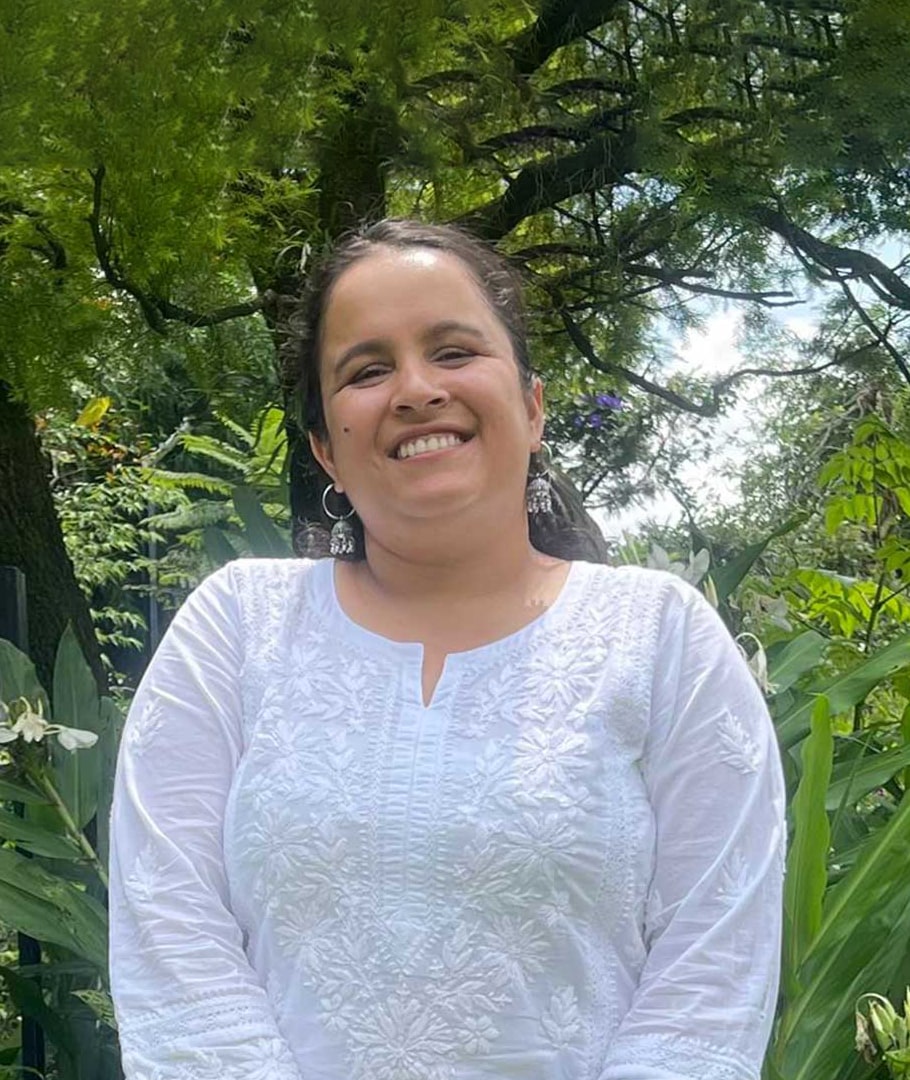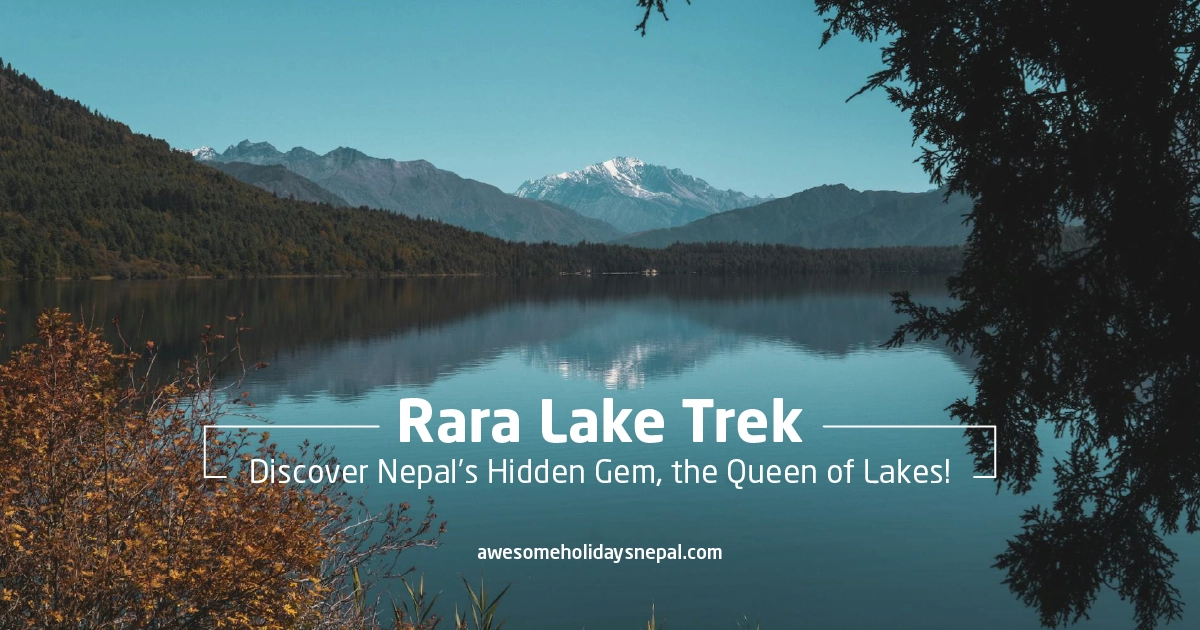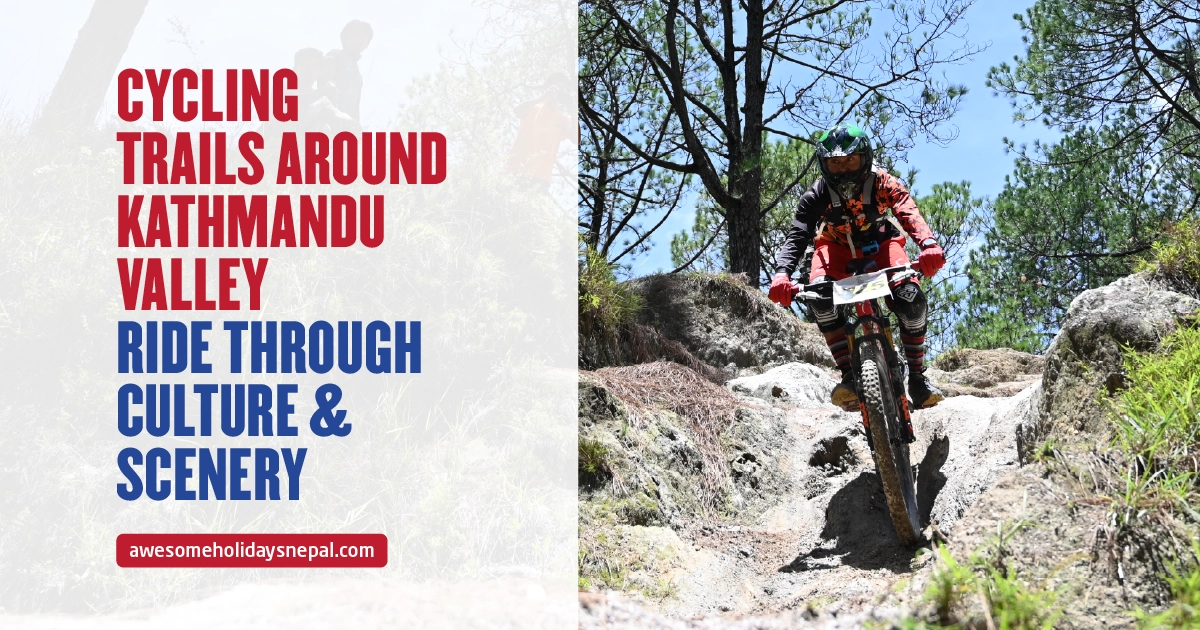Tengboche Monastery: Buddhist Pilgrimage of the Himalayas
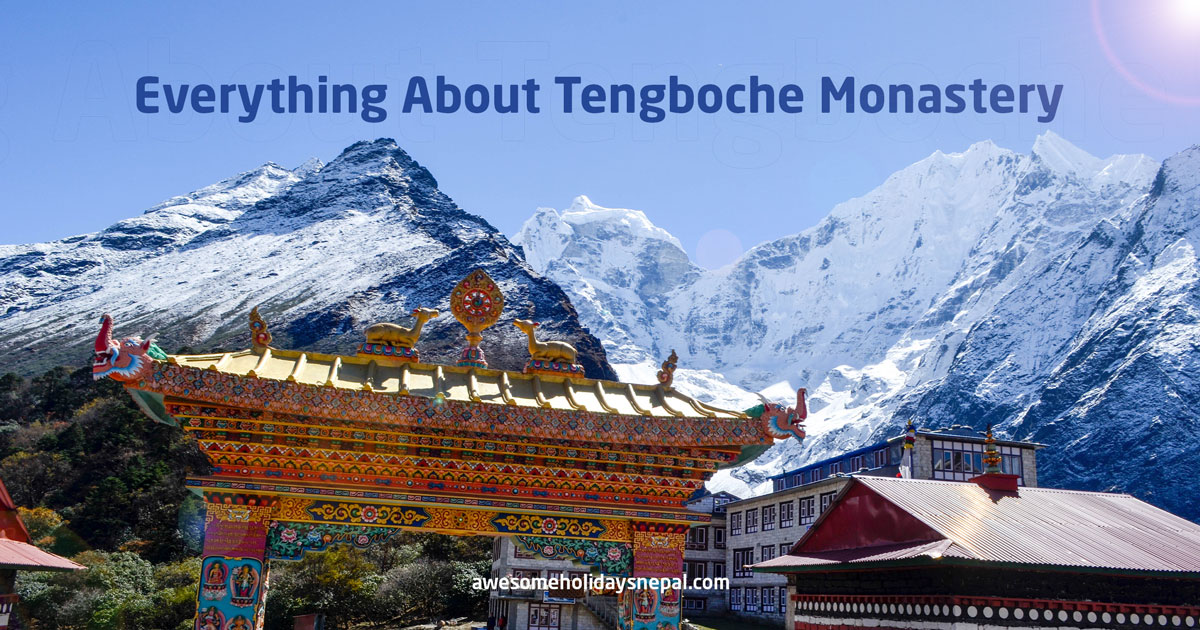
If you ever visit the Everest region, you will encounter one of the most infamous Buddhist gompas, the Tengboche Monastery. This Buddhist pilgrimage isn’t just about learning the culture but also about getting a great viewpoint.
The spiritual center of the Khumbu region offers breathtaking views of Mount Everest, the highest peak in the world, and its surrounding peaks. Witness how beauty meets cultural discovery for a serene and magnificent experience amongst the mountains.
Let’s discover more about this pilgrimage of the Khumbu region.
If you want to learn more about the Everest trek, read the following blog:
Tengboche Monastery: The Pilgrimage of the Everest Region
Tengboche monastery is one of the most famous Buddhist pilgrimages, standing atop an elevation of 3867 meters in the Everest region. Not just a religious center, this stupa is an architectural marvel unveiling mysteries of the region leading to the top of the world.
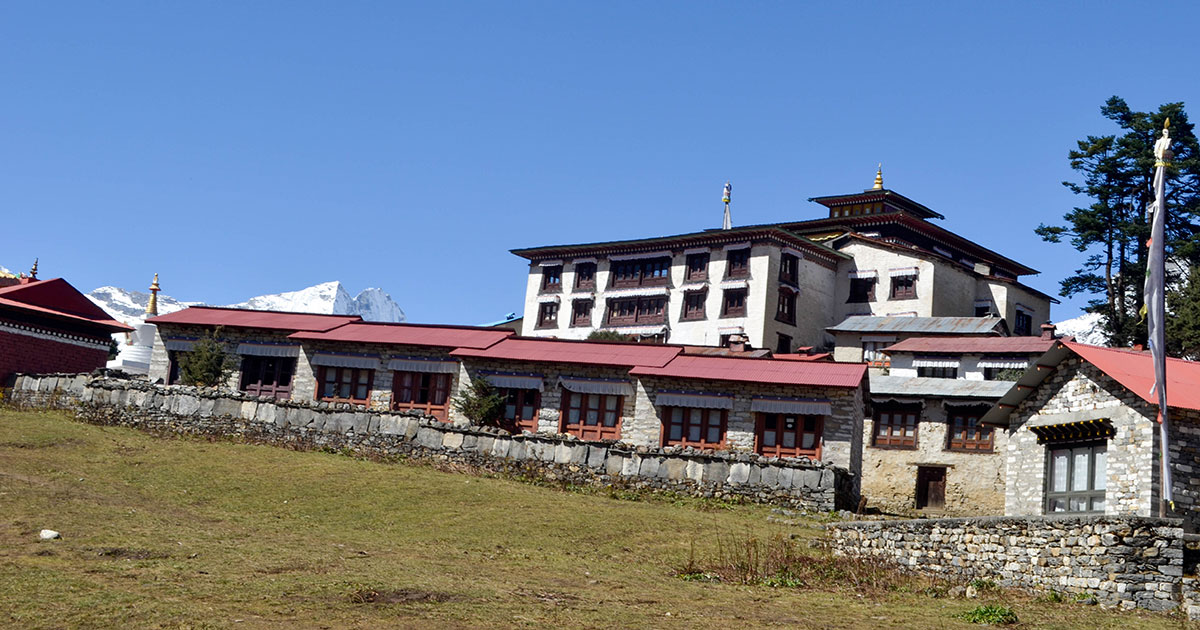
The vibrant center of Tibetan Buddhism is also called Dawa Choling Gompa or Nyingma Lama by the locals. Whatever the name is, these pilgrims act as a center of faith for the residents. You will find a number of Buddhist preaching around this monastery, along with an infliction of Tibetan art on its pillars and walls.
History of Tengboche Monastery
The history of the Tengboche monastery dates back to the 20th century. It took just 2 months of time to complete the structure of this monastery in the beginning.
According to the legends, four rich men from different villages in the area, such as Khumjung, Junbesi, Namche Bazaar, and Gole. The area’s residents also worked as laborers to construct this structure.
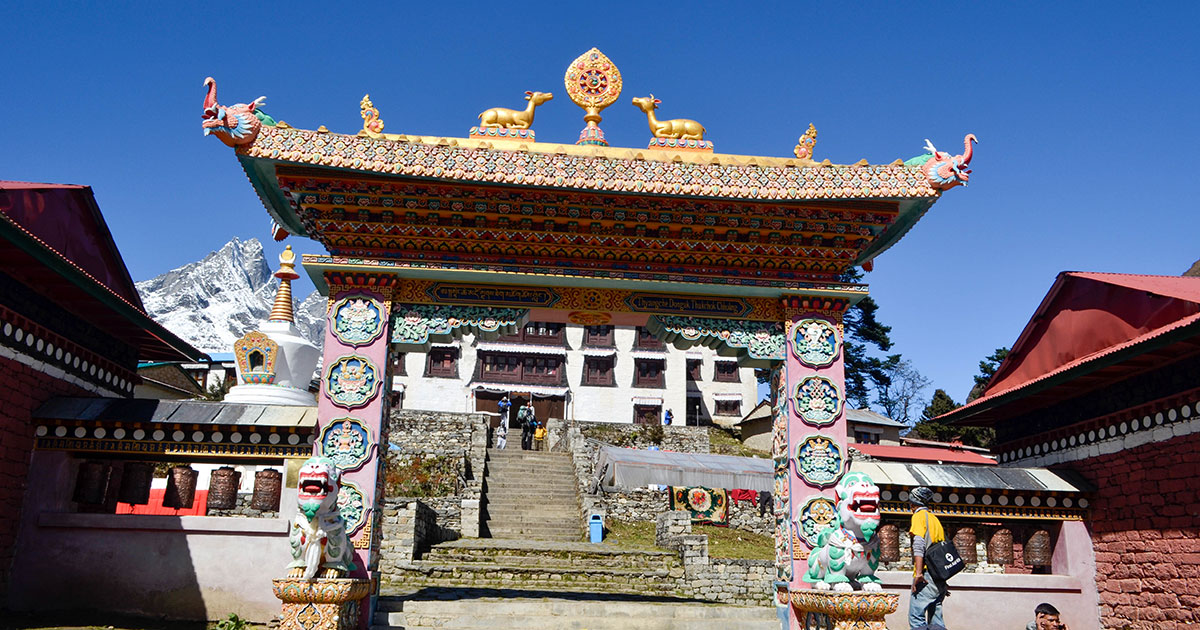
Later, during the 1934 earthquake, the main structure of the monastery was destroyed. However, it was soon reconstructed with the help of donations and contributions from the villagers. Unfortunately, another disastrous fire occurred in the monastery in 1989, and it totally burned down the structure.
Due to this destruction, the monastery was rebuilt in 1989, and since then, the structure has remained unchanged.
Highlights of Tengboche Monastery
The largest monastery in the Everest region is famous for many reasons. Some of these reasons are:
Mani Rimdu Festival
The Mani Rimdu festival, celebrated in the Tengboche monastery, is one of the major highlights of this pilgrimage. It is a 19-day festival celebrating Guru Rinpoche’s foundation of Buddhism and their triumph over Bon. Apart from this monastery, the festival is also celebrated in Thame and Chiwong however, the one in Tengboche is most popular.
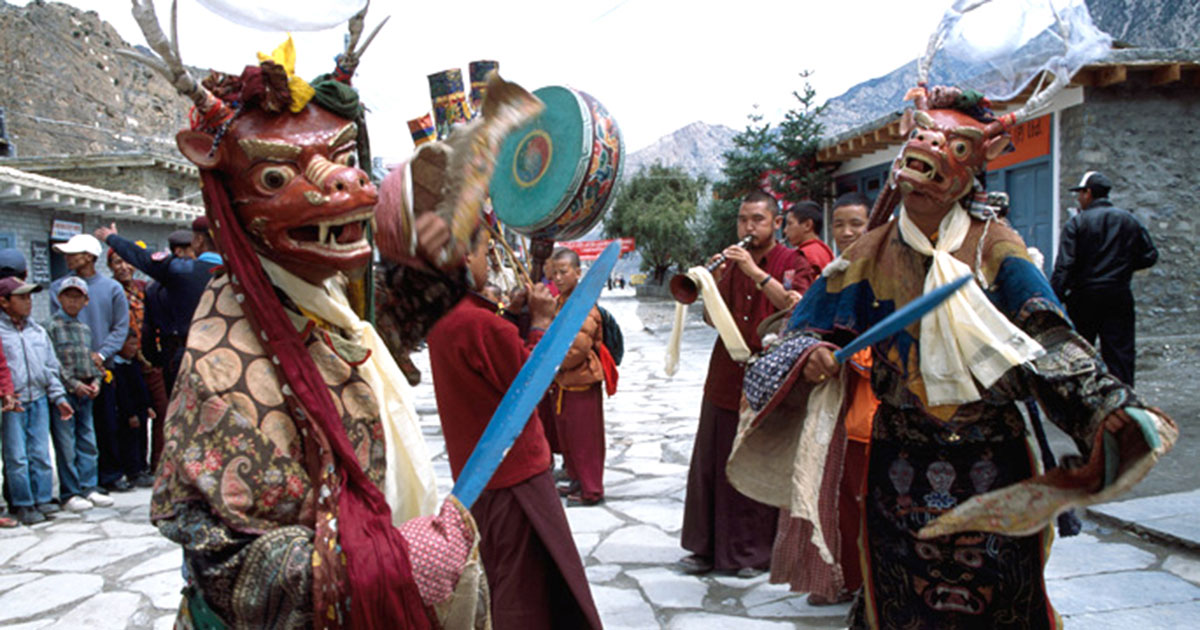
According to the Tibetan lunar calendar, this festival falls on the 10th month, which is October or November in the English calendar, the fall season for trekking. Even though it is celebrated for 19 days, only the last 3 days are open to the public, and hence, it is known to many. Many tour operators also organize the Everest trek, targeting this festival in Tengboche Monastery.
The festival is celebrated by sacred rituals and ceremonies. Monks from different parts of the country travel to the Everest region to perform these rituals, which are deeply rooted in Buddhist traditions and teachings. Devotees also perform a sacred masked dance around the fire, which is also called Cham dance.
Similar to it, Tiji festival is another big festival that lets you enjoy the Himalayas and its tradition.
Tiji Festival in Nepal: A Unique Way to Explore Tibetan Culture
Sacred Landmark of Everest Region
Tengboche is indeed a sacred pilgrimage for Tibetan Buddhists, but that is not its only essence. It holds cultural and spiritual value for the Sherpas, which is why the guides and porters visit the monastery and seek blessings before trekking to the base camp or summiting the mountain.
A Beautiful Acclimatization Stop
Since the monastery is located inside Sagarmatha National Park, a UNESCO World Heritage site, you can also explore the beauty of its surroundings. From rare animals like Red pandas, snow leopards, musk deer, and Himalayan Thar to birds like Himalayan pheasant, snow cock, blood pheasant, etc., the park is home to many endangered animals. You will most likely find alpine plants and tropical flora, such as pine, juniper, rhododendron, etc., throughout this national park’s forests.
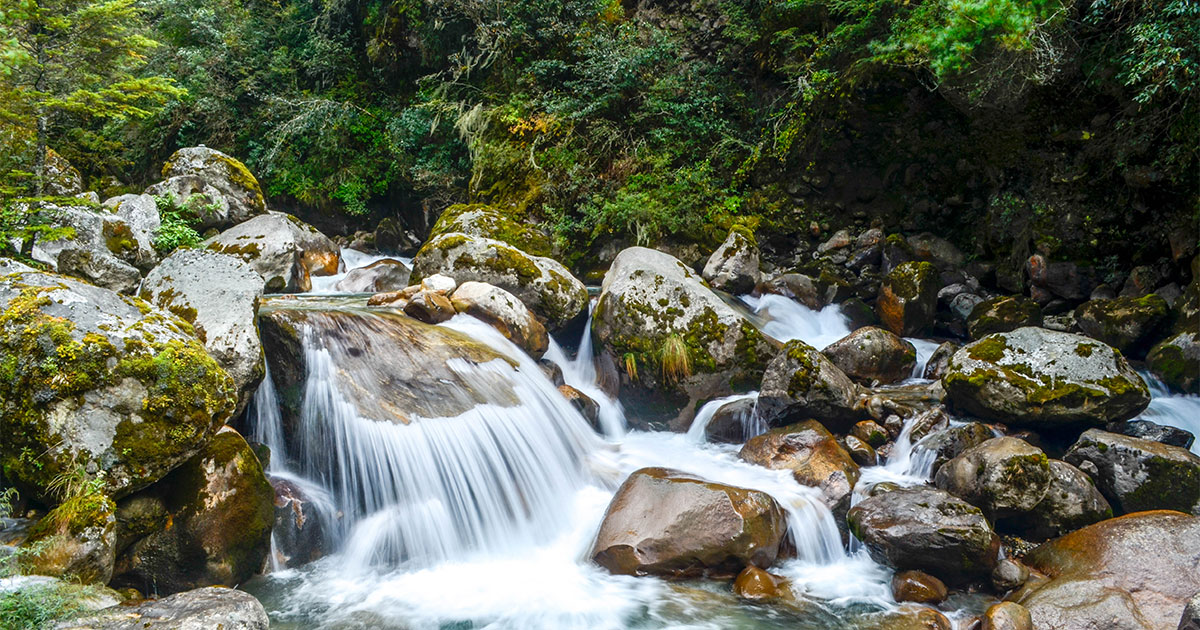
The Tengboche village and its residents are also very welcoming, so you can learn about the people in addition to praying in the monastery.
Reaching Tengboche Monastery
After you reach Namche Bazaar, you will have a day to rest and acclimatize and explore the Sherpa of the Himalayas. Next day, you will trek along the dense and luscious rhododendron forests to reach Tengboche village.
As you approach Tengboche, you can expect to meet the quiet and spiritual ambiance of the famous Tengboche Monastery, set with stunning backdrops of the Himalayas. You will witness how beauty meets cultural discovery for a serene and magnificent experience amongst mountains.
Other Monasteries in the Everest Region
Apart from Tengboche, there are several other monasteries in the region where you can learn about Tibetan Buddhists and their preaching. These religious buildings are also a good place to learn about the history and lifestyle of Sherpas residing in these areas and a great acclimatization stop.
Some of the other most famous monasteries of the Everest region are:
Khumjung Monastery
Located in the Khumjung village of the Khumbu region, the Khumjung gompa is known for more than being a religious site. Most trekkers visit it for witnessing the scalp of Yeti, a mythical creature of the Himalayas. You will find this relic well preserved inside a glass case.
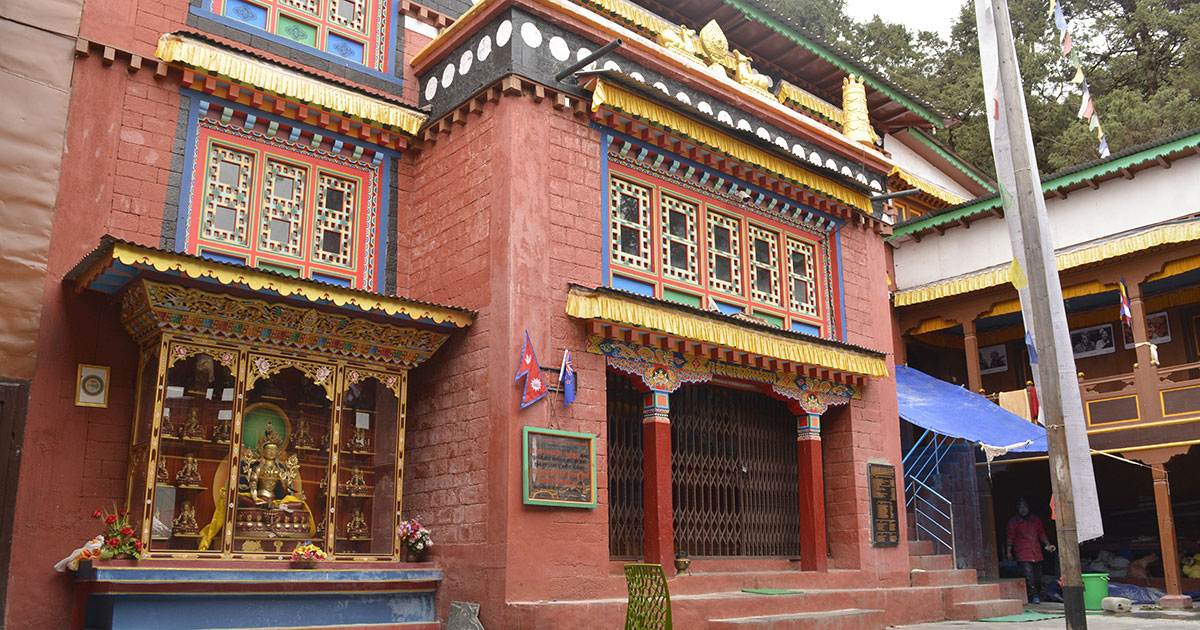
The origin of Khumjung monastery dates back to sixteenth century and is also known as one of the oldest in pilgrimage in the region. Apart from Yeti relics, the Buddhist tit-bits like statues of the monk, Buddhist murals and sacred texts inscriptions are other highlights of the monastery.
Thame Monastery
Built in 17th century, Thame monastery is another oldest monastery in Thame village of Everest region. It is located at an elevation of 3800 meters (12,500 feet) from the sea level on the Southern slopy side of Sumdur peak.

According to the legend, great master Lama Rolpa Dorjee founded this monastery endowing the great powers. People also say that master was able to twist an Iron rod with his hands as a result of these phenomenal power.
Phakding Monastery
Even though it is a small in structure, the Phakding monastery is quite an attractive site of the Phakding village. This Buddhist monastery is also called Rimijung monastery or Pema Chholing Gompa and is located at an elevation of 2865 meters from sea level.
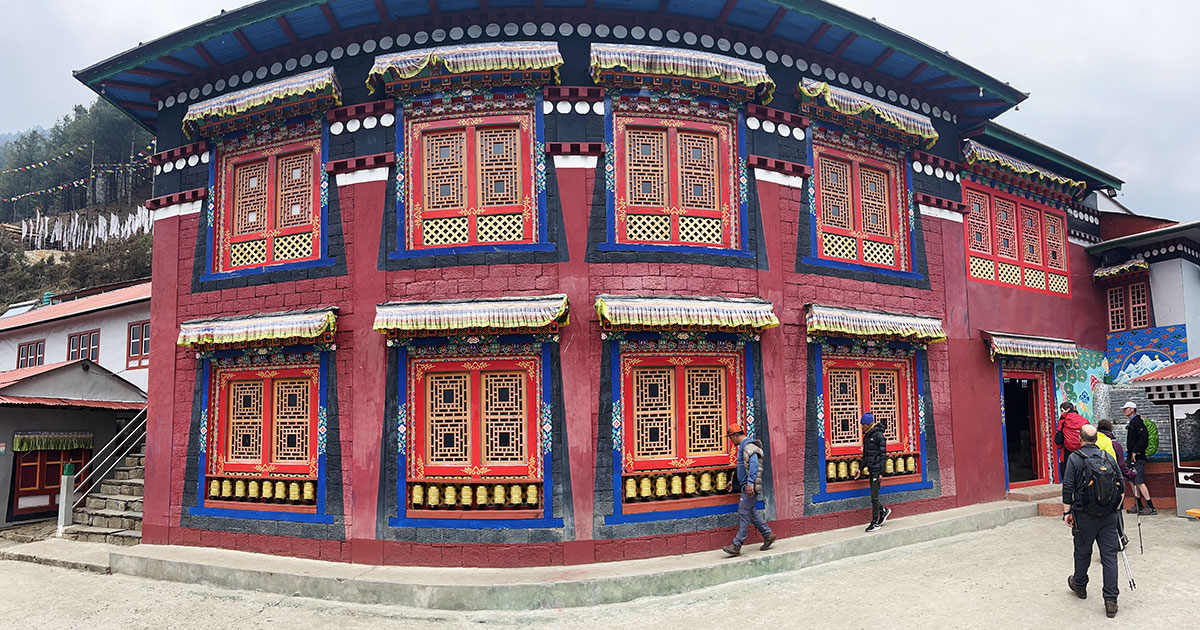
It is one of the oldest monasteries of the Khumbu region and is just 15 minutes away from Phakding village. Recently, this monastery has been enlarged and offers the fascinating view of Rhododendron forests, Kongde peak, and Thamserku.
Witness the Heritage Within the Heritage
Tengboche monastery itself is a heritage donning a stunning backdrop of Ama Dablam within Sagarmatha National Park, the infamous world heritage. With amazing art of stone masonry on the white building, extended courtyard under clear sky even adds up to this pilgrimage.
Trek to the Everest region to witness the grandeur and rich Sherpa culture of this monastery which is home to 500 monks and follows Gelugpa tradition. If you visit during the months of October and November, you will also get to be a part of Mani Rimdu festival.
Never stop exploring!
FAQs
Expand AllWhich is the oldest monastery in Nepal?
The Lama Sangwa Dorje monastery which is also know as Tengboche is the oldest monastery in Nepal.
What is the highest monastery in the world?
The Drirapuk Monastery located in the Ngari Prefecture of remote part of Tibet is the highest monastery in the world. It is located at an elevation of 5009 meters (16,434 feet) from the sea level.
Can you see Everest from Tengboche?
Yes, you can see Everest and its surrounding peaks like Ama Dablam, Nuptse, Lhotse, and Thamserku from Tengboche monastery.
How do I get to Tengboche monastery?
You can get to Tengboche monastery by travelling from Namche Bazaar. It is 9.6 kilometers away from Namche and takes about 6 to 7 hours to trek through this distance.
Can I stay in a monastery in Nepal?
Typically monasteries do not allow visitors to reside or stay. However, some monasteries have a separate building to allow visitors to stay and experience the life of a monk for some days.
Related blog posts
Discover a choice of tourist destinations loved by most of our visitors. Whether you're on a jungle safari to spot rare animals or walking through a world heritage site, these well-planned itineraries cover the major highlights of Nepal.

